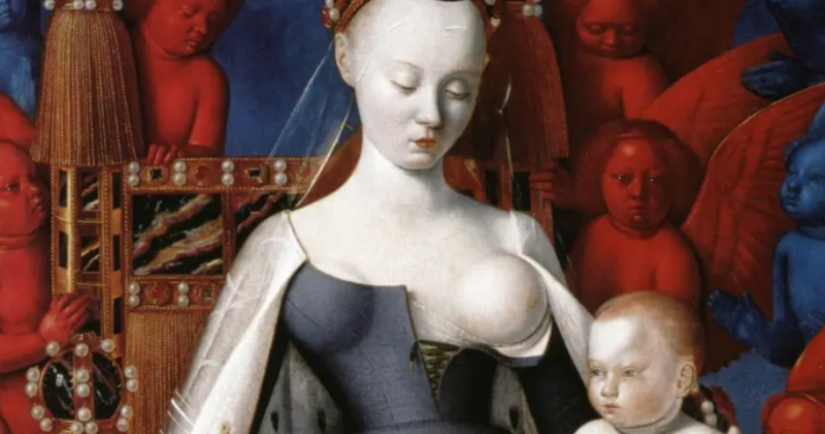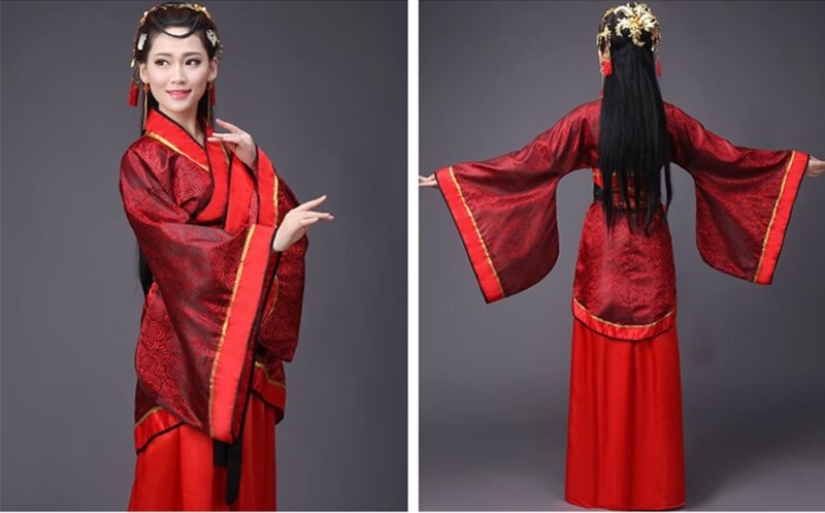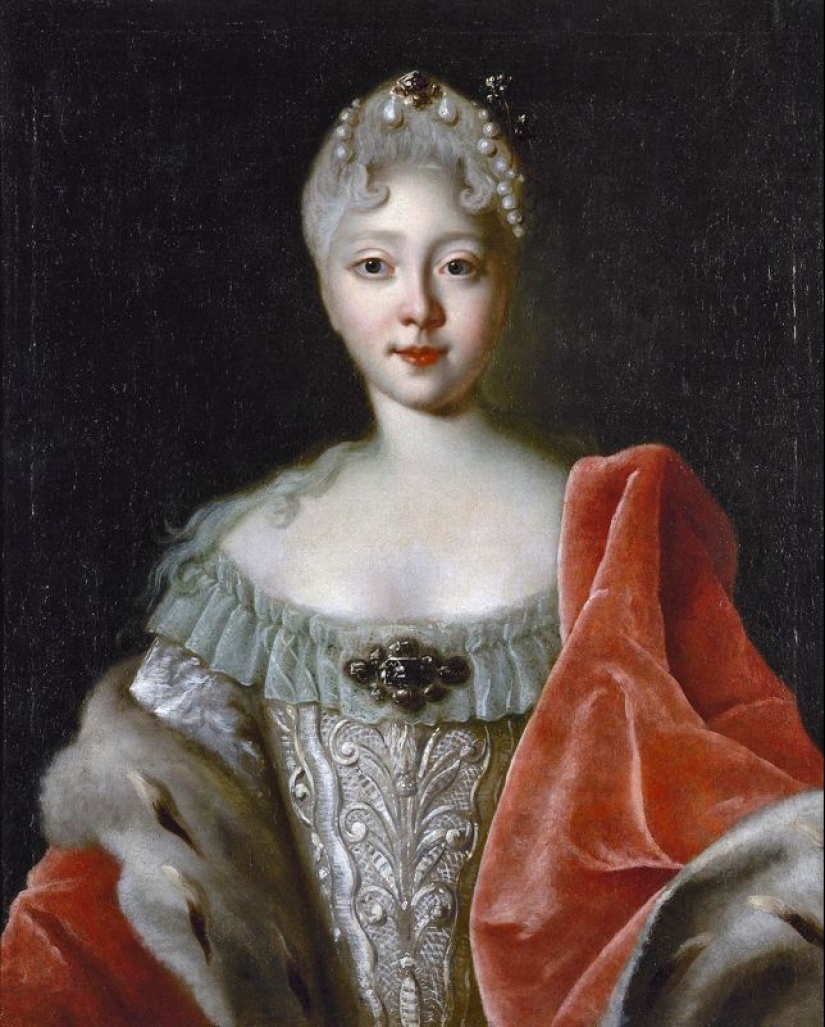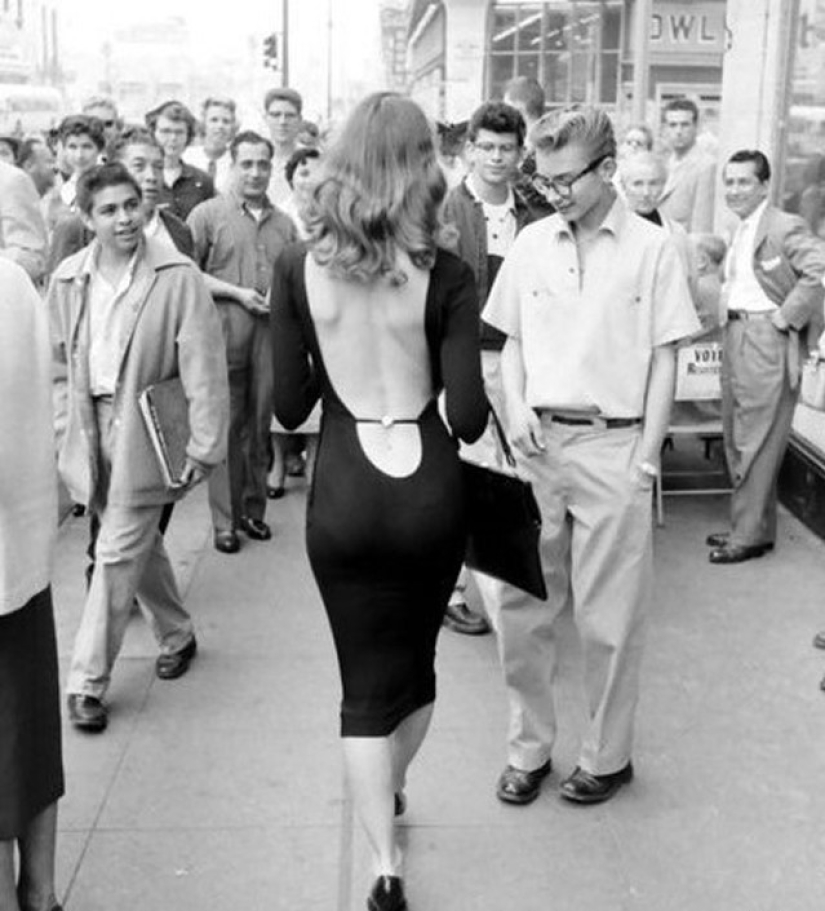The history of women's cleavage: from police control, to complete permissiveness
Women's breasts have always inspired poets and artists, driven lovers crazy and made envious women suffer. It was carved out of marble and cast in bronze, described in prose and in verse, written on canvases and ... strictly forbidden. How has the attitude to women's breasts changed at different times and why, despite everything, breast-revealing clothing was popular in different eras in different parts of the world?

The word "cleavage" appeared in In Russia in the 18th century and firmly established itself in the Russian language, denoting several different concepts. But abroad, there are two varieties of it-the French term décolleté, that is, "without a neck" and the English cleavage — "cutout". In the first case, it is a large neckline that opens the shoulders and chest, often up to the nipples, and in the second-a style when the shoulders are hidden by clothes, but the neck, collarbones, the space between the breasts and, sometimes, below them, are open for viewing.
Fashion historians believe that the history of the appearance of these two cutouts is different. The neckline was originally created for seduction, but the cleavage became a necessity, designed to provide heat exchange in the hot season. The first cleavages were equipped with Egyptian shirts-dresses of kalaziris with a V-neck, almost completely revealing the chest. Similar clothes were worn by women on the island of Crete, according to ancient artists and sculptors.
In the Middle Ages, the cutout was made not only on shirts, but also in corsages — it helped to breathe in a tight-fitting dress that fits the upper part of the body. Women of the lower classes wore a cleavage with lacing in front, which could be laced without the help of servants. But the aristocrats were forced to wear more uncomfortable dresses with back lacing, which was helped to tighten by maids and maids. Whatever it was, in both cases, the churchmen considered the chest opening to the eye to be sinful.

The Franciscan monk-preacher Olivier Melyar, who was particularly close to the God — fearing French king Louis XI, claimed that women who wear too open a cleavage during their lifetime are waiting for a special punishment in the next world - "they will be hung by the udder in hell." Melyar was indignant for good reason — at the court of Louis XI's father, King Charles VII, very revealing cutouts were in fashion. This can be easily seen by looking at the image of his mother-Queen Isabella of Bavaria from the Palace of Justice in Poitiers.

Under the son of Charles VII, Louis, the churchmen took revenge on the ladies, forcing everyone to wear the most closed dresses. However, at the court of Catherine de ' Medici, a way out of the situation was found — it became a square cutout on the chest "window", with the neck and shoulders closed. At the same time, the top of the chest, raised by the corset, was perfectly visible.
In Spain, where the Inquisition was rampant, the ladies found a special way out of the situation — the neckline on their dresses was covered with lush collars. But at the court of the French king Louis XIV, the fashion for the decollete blossomed in exuberant color — the loving "sun king" rewarded several favorites with his location, without losing sight of other women. Therefore, there was fierce competition at the court, which was reflected in the revealing outfits.

In Protestant countries, where virtue was watched especially strictly, the cleavage was not held in high esteem and it was replaced by a very modest, sometimes barely noticeable, cleavage. Dutch and Swiss girls laced their breasts very tightly, and what remained in sight was chastely covered with scarves.
Oddly enough, but the cleavage also existed in women's clothing of countries that professed Islam. The V-shaped cleavage in the East was called "juyub" and a woman could only show it to her spouse. And even in dresses with such a cleavage, ladies could appear, without hiding, in the female half of the house among maids and eunuchs, as well as in the presence of children of any sex, which were not taken into account.
In Muslim countries, the observance of decency in clothing was monitored even more strictly than in Europe. In the Ottoman Empire, the size of the cutouts was monitored by a special unit of the vice police. According to the rules, the collar of a casual women's dress was considered normal if the head fit tightly into it.

In Japan, the neckline was allowed, and of any size, but only it was made not in front, but on the back. The geisha seduced their guests with a cutout that opened the back almost to the middle. In the Land of the Rising Sun, women with outstanding forms were very rare, so such cleavages greatly helped the seductresses.
The geisha kimono had a U-shaped neckline on the back, while it was shyly wrapped up to the chin on the chest. The hair of the Japanese courtesan was removed in high hairstyles, so they did not cover the elegant lines of the back, visible in a deep cut.

However, this fashion did not prevail in all Asian countries. In Vietnam, women wore deaf robes, trousers and dresses aozay under the throat, and in In China, the women's formal robe of Quju was tightly wrapped around the chest. In India, under the sari, which could not cover the body, women wore choli-short blouses with sleeves that covered their charms from immodest looks.
Our ancestors did not welcome excessive frankness in women's outfits. In the Middle Ages in Russia, both commoners and aristocrats wore shirts that covered not only their breasts, but also their arms. Nursing mothers wore special shirts gathered at the gate in folds. These folds concealed an incision through which the breast was extracted to give it to the baby. The system was so cleverly designed that even in this case, the chest was almost invisible.

Everything changed radically when Peter I ascended the throne. The reformer tsar, who welcomed European trends, forced the courtiers, and later the bourgeoisie, to dress "in the German fashion". Only peasant women managed to avoid Europeanization, who continued to ignore any cleavage and cleavages and until the beginning of the 20th century wore traditional closed sundresses and shirts.
In the 18th century in The Russian Empire was dominated by mind-blowing cleavage, which left almost no room for the imagination of men. The balls of this era were not inferior in luxury and scope to European ones, and women competed in the splendor of crinolines and the depth of the neckline.

Dresses became more modest only in the first half of the 19th century, when it became indecent to appear in the daytime with a revealing neckline in crowded places. Decolletage, which had fallen out of everyday use, was still in use only at evening balls and social events. Gradually, women's clothing became more modest and by the beginning of the First World War, the neckline had almost completely lost its relevance.
The return to eroticism was made in the 20s, when tunics and sports tops from jersey were used. The special interest that Europeans have awakened in In Japan, it led to the appearance of deep cutouts on the back, like in a geisha kimono. In Europe, in the late 20s, dresses and blouses were worn that completely hide the chest, but open the back to the buttocks.

Special attention was paid to the decollete in the post-war years. In the 50s, there was a New look from Christian Dior, which implied a laced chest sticking out of the neckline at an unnatural angle. Vikki Dugan, a Playboy magazine model nicknamed "The Back", brought the cutouts on the back to complete absurdity, revealing even the sacrum to the eyes of others.

During the second half of the 20th century and the beginning of the 21st century, the fashion for cleavage then returned, then turned out to be forgotten. Now we can observe another "renaissance" - in The UK even holds a National Day of Cleavage, during which first-magnitude stars, like Madonna, with mind-blowing cleavages appear at events.
Keywords: Breast | Women's clothing | King | Dress | Seduction | Middle ages
Post News ArticleRecent articles

There are many places in the world where only the chosen ones can be. The cities of Mecca and Medina in Saudi Arabia are well known ...

This collection of photos will clearly please the little inner perfectionist who lives in each of us. It doesn't matter how much ...
Related articles

King Louis XIV of France, whom the courtiers called the "Sun King", is a very popular person in literature and cinema. We know this ...

Surprisingly, many quite ordinary things have names that are unusual to our ears, but at the same time correct. You've probably ...

She first appeared on the spread of The Sun newspaper in February 1983. The next morning, Samantha woke up famous, and soon ...

If you don't feel good about the donut you ate for lunch, relax - it can get worse ... At least you didn't eat the ...